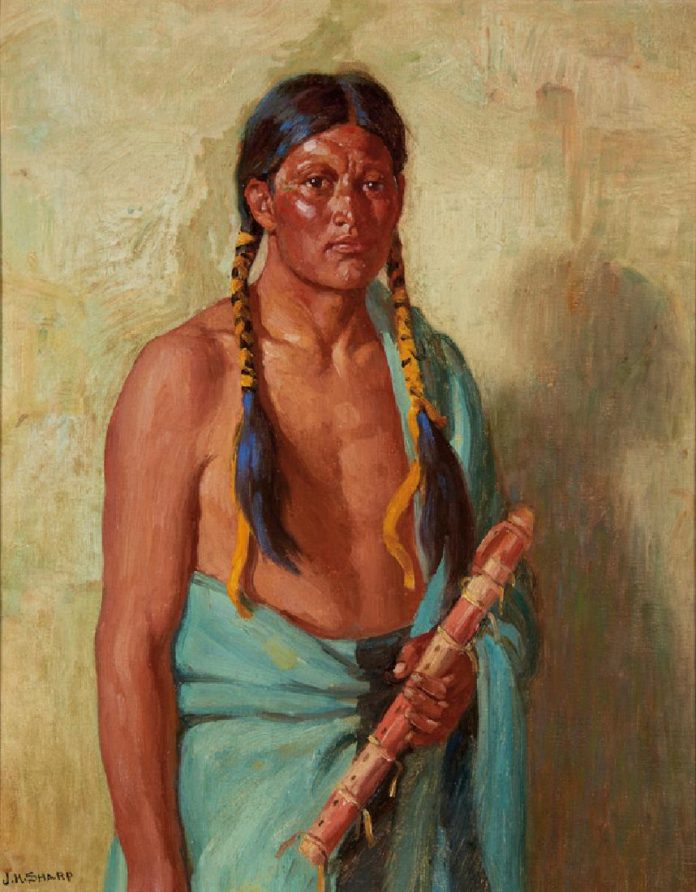In this ongoing series for Fine Art Today, we take a longer look at the history and features of a soon-to-be-available artwork of note. This week we highlight a magnificent portrait of Native American Jerry Taos by an American master.
On August 11, Altermann Galleries & Auctioneers in Santa Fe will be offering up a remarkable portrait by Joseph Henry Sharp (1859-1953) — the “Spiritual Father” and a founding member of the Taos Society of Artists. Titled “Jerry Taos with a Lover’s Flute,” the half-length portrait shows a braided Taos holding a large flute in his left hand. A brilliant turquoise garment drapes over one shoulder.
Sharp is particularly known for his images and portraits of Native American life and, in fact, was commissioned by President Theodore Roosevelt to execute portraits of 200 Native American warriors who survived the Battle of the Little Bighorn. Moreover, scholars and collectors alike often remark on the artist’s masterful use of color, which is evidenced in the portrait of Jerry Taos.
The condition of the portrait is very good, according to Altermann, but ultraviolet inspection has revealed three areas that show signs of restoration. Auction estimates are between $75,000 and $125,000. To learn more, visit here.
This article was featured in Fine Art Today, a weekly e-newsletter from Fine Art Connoisseur magazine. To start receiving Fine Art Today for free, click here.








